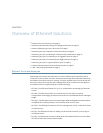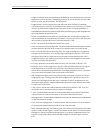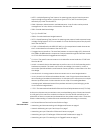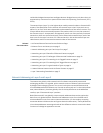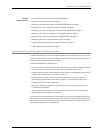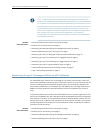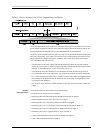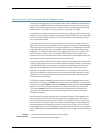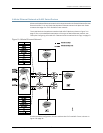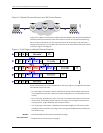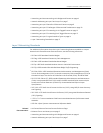
• Networking at Layer 2: Benefits of Ethernet Frames on page 9
• Networking at Layer 2: Forwarding VLAN Tagged Frames on page 11
• Networking at Layer 2: Forwarding Dual-Tagged Frames on page 13
• Networking at Layer 2: Logical Interface Types on page 14
• A Metro Ethernet Network with MX Series Routers on page 15
• Layer 2 Networking Standards on page 17
Networking at Layer 2: Forwarding VLAN Tagged Frames
VLAN tags were not developed as a way to limit network node table entries. They were
originally invented to allow LAN switches to distinguish between physical groups of LAN
ports and logical groups of LAN ports. In other words, there was a need to configure a
LAN switch (or group of local LAN switches) to know that “these ports belong to VLAN
A” and “these ports belong to VLAN B.”
This was important because of how all LANs, not just Ethernet, work at the frame level.
Lots of frames on a LAN are broadcast to all stations (hosts and network nodes) on the
LAN segment. Also, multicasting works by flooding traffic within the VLAN. The stations
that received broadcast frames form the broadcast domain of the LAN. Only Ethernet
frames belongingto same broadcast domain are forwarded out certain ports on the LAN
switch. This preventsbroadcast storms and isolates routinecontrol frames onto the LAN
segment where they make the most sense.
The VLAN tag was invented to distinguish among different VLAN broadcast domains on
a group of LAN switches. The VLAN tag is a two-byte field inserted between the source
MAC address and the Ethertype (or length) field in an Ethernet frame. Another two-byte
field, the Tag Protocol Identifier (TPI or TPID), precedes the VLAN tag field.
Two fields were necessary to hold one piece of information, the VLAN tag, to enable
receivers to distinguish between untaggedor plain Ethernet frames and those containing
VLAN tags.A mechanismwas requiredtodifferentiate betweenthe Ethertypeand length
field for the untagged case and to distinguish among VLAN tag, Ethertype, and length
field for the tagged case. The answer was to constrain the TPID field to values that were
not validEthernet framelengths ordefined asvalid Ethertypes.The firstVLAN tag added
to an Ethernet frame is always indicated by a TPID value of 0x8100. This is not the VLAN
identifier, which appears in the next two bytes.
In Figure 1 on page 12, a native or normal Ethernet frame is compared to a VLAN-tagged
Ethernet frame. The lengths of each field, in bytes, is shown next to the field name.
11Copyright © 2010, Juniper Networks, Inc.
Chapter 1: Overview of Ethernet Solutions



